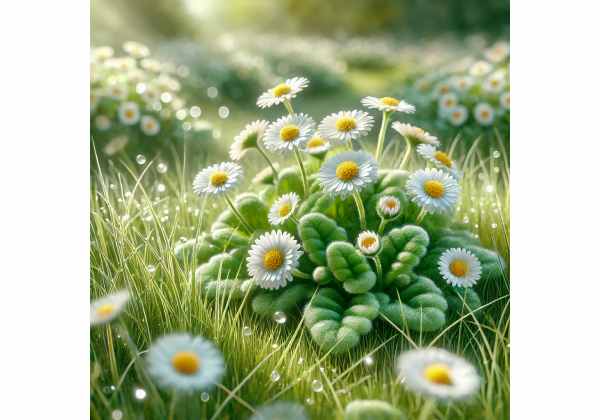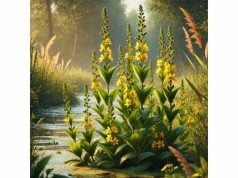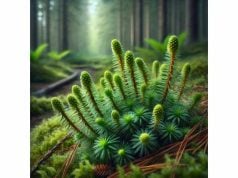Lawn Daisy is a charming herbaceous perennial prized for its delicate beauty and surprising therapeutic potential. Revered for its anti-inflammatory, antioxidant, and antimicrobial properties, Lawn Daisy contains a unique blend of active compounds that promote skin healing, soothe minor ailments, and support overall well-being. Its gentle floral aroma and subtle taste make it an attractive addition to herbal teas, natural skincare products, and traditional remedies. As a common feature in well‐tended lawns and gardens, Lawn Daisy not only enhances aesthetic appeal but also offers diverse health benefits, serving as a natural remedy in both culinary and medicinal applications.
Table of Contents
- Botanical Overview and Morphological Characteristics
- Phytochemical Composition and Key Active Ingredients
- Health Benefits and Core Properties
- Applications, Usage Guidelines, and Safety Measures
- Scientific Studies and Research Insights
- Frequently Asked Questions
Botanical Overview and Morphological Characteristics
Lawn Daisy is a widespread and resilient perennial native to temperate regions of Europe and North America. Commonly identified as a member of the Asteraceae family, it is closely related to the familiar garden daisy. This herb is distinguished by its small, daisy-like flowers characterized by bright white petals encircling a vivid yellow central disc. The foliage is soft, green, and slightly hairy, providing a lush contrast to the radiant blooms that emerge during the spring and summer months.
Taxonomy and Natural Habitat
Lawn Daisy (often botanically linked with species such as Bellis perennis) thrives in environments that include manicured lawns, meadows, and disturbed soils. It has adapted to a wide range of conditions, from urban gardens to rural fields. The plant’s robust nature allows it to flourish even in nutrient-poor soils, making it a common sight in well‐tended grassy areas. Its taxonomy places it in the Asteraceae family, which is known for composite flower heads and complex inflorescences—a feature that contributes to its ornamental appeal and functional properties.
Morphological Features
The visual charm of Lawn Daisy is largely attributable to its simple yet elegant morphology. The plant typically reaches a modest height of 4–8 inches, making it ideal for ground cover in lawns. Its leaves are arranged in a basal rosette, with subsequent smaller leaves emerging along the flowering stems. These leaves are generally lanceolate to oblong in shape, exhibiting a slightly serrated margin and a soft, velvety texture due to a fine covering of trichomes (tiny hair-like structures).
The inflorescence is a composite flower head where numerous tiny individual flowers (florets) are grouped together to form what appears to be a single blossom. The outer ligulate florets, which look like petals, are white and radiate outward, while the inner tubular florets form the yellow disc. This unique arrangement not only enhances the plant’s visual appeal but also maximizes its ability to attract pollinators such as bees and butterflies.
Growth Conditions and Cultivation
Lawn Daisy is highly adaptable, thriving in full sun to partial shade. It prefers well-drained, moderately fertile soils and exhibits considerable drought tolerance once established. In urban and suburban lawns, it often grows as a wildflower, adding a splash of color amidst the green. Gardeners appreciate its low-maintenance nature and ability to naturally reseed, ensuring a perennial display year after year.
In cultivation, Lawn Daisy is often managed to maintain a balance between its ornamental value and its potential as an herbal remedy. The plant’s ability to thrive in both mowed lawns and less formal settings makes it an accessible herb for home gardeners. It is frequently integrated into wildflower gardens and eco-friendly landscapes where native species are encouraged to flourish. Furthermore, its resilience to pests and diseases minimizes the need for chemical interventions, aligning with organic gardening principles.
Historical and Cultural Significance
Historically, Lawn Daisy has been used in folk medicine for its purported healing properties. Traditional remedies have employed the plant to treat minor wounds, skin irritations, and inflammatory conditions. Its gentle nature and accessibility have made it a favored choice in rural communities, where herbalists often prepared infusions and poultices from fresh or dried leaves and flowers.
In addition to its medicinal uses, Lawn Daisy has enjoyed a place in cultural symbolism. In various European traditions, daisies are seen as symbols of purity, innocence, and new beginnings. The simplicity and unassuming beauty of the Lawn Daisy have inspired numerous legends, songs, and artworks, cementing its status as both a botanical treasure and a cultural icon.
Ecological Impact
From an ecological perspective, Lawn Daisy plays a significant role in supporting local biodiversity. Its nectar-rich flowers are a valuable food source for a variety of pollinators, which in turn contribute to the health of the surrounding ecosystem. The plant’s modest size and dense growth habit help to stabilize soil and reduce erosion, particularly in areas where other vegetation is sparse.
Moreover, Lawn Daisy is noted for its ability to thrive in environments where other plants may struggle, such as compacted lawns or urban settings with limited soil quality. This hardiness not only makes it a reliable ground cover but also an important species in ecological restoration projects aimed at reintroducing native flora.
Modern Botanical Studies
Recent botanical studies have focused on the genetic diversity and adaptive strategies of Lawn Daisy. Researchers have explored its reproductive biology, resilience to environmental stress, and potential for sustainable cultivation. These studies not only help to preserve the species but also open avenues for its use in natural medicine and eco-friendly landscaping. The insights gained from modern research continue to enhance our understanding of how Lawn Daisy can be effectively integrated into both horticultural practices and therapeutic applications.
In summary, the botanical overview and morphological characteristics of Lawn Daisy reveal a plant that is as functional as it is beautiful. Its hardy nature, coupled with its distinctive appearance and ecological significance, underscores its value in both ornamental horticulture and traditional medicine. Whether admired for its aesthetic qualities in a manicured lawn or utilized for its healing properties in natural remedies, Lawn Daisy stands as a testament to nature’s ability to blend beauty with utility.
Phytochemical Composition and Key Active Ingredients
The health-promoting properties of Lawn Daisy are closely linked to its rich phytochemical profile. This section delves into the bioactive compounds that contribute to its therapeutic effects, highlighting the complex chemistry that underpins its natural benefits.
- Apigenin
Apigenin is a prominent flavonoid found in Lawn Daisy known for its potent antioxidant and anti-inflammatory properties. Research indicates that apigenin may help reduce oxidative stress and modulate inflammatory pathways, making it beneficial for skin repair and overall cellular health. Its presence contributes to the herb’s ability to soothe irritation and protect against environmental stressors. - Luteolin
Another key flavonoid, luteolin, exhibits strong antioxidant effects and may play a role in reducing the risk of chronic diseases by neutralizing free radicals. Luteolin has been studied for its potential anticancer properties, as well as its ability to improve vascular health. In Lawn Daisy, luteolin works synergistically with other compounds to enhance the herb’s overall therapeutic profile. - Chlorogenic Acid
Found in many medicinal plants, chlorogenic acid is recognized for its antioxidant and anti-inflammatory effects. In Lawn Daisy, this compound contributes to the reduction of oxidative damage and supports metabolic health. It is also known to assist in modulating blood sugar levels, thus playing a role in digestive and metabolic wellness. - Caffeic Acid
Caffeic acid is a phenolic compound with powerful antioxidant capabilities. It helps in neutralizing harmful free radicals and has been associated with anti-carcinogenic effects. In Lawn Daisy, caffeic acid contributes to the herb’s ability to protect cells from oxidative damage, promoting overall health and longevity. - Sesquiterpene Lactones
These compounds are a group of terpenoids known for their anti-inflammatory and antimicrobial properties. Sesquiterpene lactones in Lawn Daisy have been linked to the reduction of inflammation and may offer protective benefits against certain microbial infections. Their bioactivity is a key factor in the herb’s traditional use as a remedy for minor wounds and skin irritations. - Flavonols
Flavonols such as quercetin and kaempferol are present in Lawn Daisy and contribute to its antioxidant activity. These compounds help stabilize cell membranes and prevent lipid peroxidation, thus reducing inflammation and supporting cardiovascular health. Their synergistic effects with other polyphenols enhance the herb’s overall efficacy in combating oxidative stress. - Essential Oils and Volatile Compounds
Although Lawn Daisy is not primarily known as an aromatic herb, it does produce a subtle blend of volatile compounds that contribute to its therapeutic properties. These essential oils, present in trace amounts, exhibit mild antimicrobial and soothing effects. They also enhance the sensory experience of the herb, making it a pleasant addition to aromatherapy and natural cosmetic formulations. - Polyphenolic Compounds
The rich polyphenolic content in Lawn Daisy supports its reputation as a powerful antioxidant. These compounds work together to scavenge free radicals, thereby protecting cells from oxidative damage. Their presence is particularly significant in formulations designed for skin rejuvenation and anti-aging, as they help mitigate the effects of environmental stress on the skin.
The interplay between these bioactive compounds creates a complex matrix that is responsible for Lawn Daisy’s multifaceted health benefits. Each constituent, whether acting independently or synergistically, contributes to the herb’s overall ability to reduce inflammation, combat oxidative stress, and support cellular repair. Modern extraction techniques aim to preserve this delicate balance, ensuring that Lawn Daisy-based products deliver maximum efficacy in both medicinal and cosmetic applications.
Ongoing research continues to uncover additional phytochemicals in Lawn Daisy that may further enhance its therapeutic profile. As scientists delve deeper into its chemical composition, new applications and benefits are likely to be discovered, reinforcing its status as a valuable herb in natural medicine and holistic health practices.
Health Benefits and Core Properties
Lawn Daisy is celebrated not only for its ornamental appeal but also for its extensive range of health benefits. Its core properties are rooted in its antioxidant, anti-inflammatory, and antimicrobial activities, which contribute to various therapeutic applications.
Stress Relief and Antioxidant Protection
One of the primary benefits of Lawn Daisy is its ability to combat oxidative stress. The flavonoids and polyphenolic compounds present in the herb play a crucial role in neutralizing free radicals. This antioxidant effect helps to protect cells from damage, thereby reducing the risk of chronic diseases and supporting overall vitality. By incorporating Lawn Daisy into daily wellness routines, individuals can promote a healthier, more resilient system capable of withstanding environmental stressors.
Anti-Inflammatory and Skin-Healing Effects
Lawn Daisy has long been used in traditional medicine to address inflammation. The presence of apigenin, luteolin, and sesquiterpene lactones works synergistically to reduce inflammation at the cellular level. These compounds help alleviate symptoms of skin irritations, minor wounds, and joint discomfort. Topical applications in the form of creams or infusions can promote faster healing and reduce redness, making Lawn Daisy a favored ingredient in natural skincare formulations.
Digestive and Metabolic Support
Historically, Lawn Daisy has been used to aid digestion. Its phenolic acids, including chlorogenic and caffeic acid, support gastrointestinal health by promoting smooth digestion and reducing bloating. These compounds also help modulate blood sugar levels, contributing to improved metabolic function. Herbal teas and infusions made from Lawn Daisy can serve as gentle digestive aids, particularly after heavy meals.
Antimicrobial and Wound Care Properties
The antimicrobial properties of Lawn Daisy, attributed to its sesquiterpene lactones and essential oil components, make it an effective natural antiseptic. These compounds help inhibit the growth of bacteria and fungi, reducing the risk of infection in minor cuts and abrasions. As a result, Lawn Daisy is often incorporated into poultices and ointments aimed at wound care and skin rejuvenation.
Cardiovascular and Anti-Aging Benefits
The robust antioxidant capacity of Lawn Daisy not only protects against cellular damage but also supports cardiovascular health. By reducing oxidative stress, the herb helps maintain the integrity of blood vessels and may contribute to lower cholesterol levels. Additionally, the anti-aging properties of its flavonols and polyphenols are valued in cosmetic applications. Regular use of Lawn Daisy extracts in skincare routines can improve skin texture, reduce fine lines, and enhance overall radiance.
Holistic and Integrative Wellness
Lawn Daisy’s broad spectrum of benefits makes it an ideal candidate for holistic health practices. Whether used as a dietary supplement, incorporated into natural skincare products, or enjoyed as a soothing herbal tea, the herb offers a multifaceted approach to wellness. Its gentle yet effective properties ensure that it can be integrated into a variety of lifestyle regimens, supporting both physical and mental health.
In summary, the health benefits and core properties of Lawn Daisy are diverse and well-supported by both traditional use and modern research. Its ability to reduce inflammation, protect against oxidative damage, promote digestive health, and support skin healing makes it a valuable resource in natural medicine. Whether you are seeking to enhance your daily health routine or address specific ailments, Lawn Daisy provides a natural, holistic solution that bridges the gap between nature and science.
Applications, Usage Guidelines, and Safety Measures
The versatility of Lawn Daisy extends into various fields such as culinary arts, herbal medicine, and cosmetic formulations. Understanding its proper applications and adhering to safety guidelines is key to harnessing its full potential.
Culinary Uses
Lawn Daisy can be used to enhance the flavor and visual appeal of various dishes. Its mildly aromatic and slightly bitter taste makes it an excellent addition to salads, herbal teas, and infusions. When used in cooking, the herb should be added in small quantities to complement other flavors without overwhelming the dish. Always ensure that the Lawn Daisy used for culinary purposes is of food-grade quality and free from pesticides.
Medicinal and Therapeutic Applications
Traditionally, Lawn Daisy has been used as a natural remedy for minor wounds, digestive discomfort, and inflammatory conditions. Herbal infusions or decoctions made from the dried flowers and leaves can be consumed to soothe the gastrointestinal tract, while topical applications—such as poultices or creams—can help reduce inflammation and accelerate wound healing. It is advisable to consult with a healthcare professional when using Lawn Daisy for medicinal purposes, especially for individuals with pre-existing conditions or those who are pregnant or breastfeeding.
Skincare and Cosmetic Formulations
Lawn Daisy’s antioxidant and anti-inflammatory properties make it a popular ingredient in natural skincare products. Extracts from the herb are often incorporated into creams, serums, and facial masks to help combat signs of aging, reduce redness, and promote skin regeneration. When formulating or using products containing Lawn Daisy, it is important to perform a patch test to check for any allergic reactions or skin sensitivities.
Aromatherapy and Relaxation
Although Lawn Daisy is not primarily known for its aroma, its subtle fragrance can be used in aromatherapy to promote relaxation and mental clarity. When diffused in a well-ventilated room, the herb’s gentle scent may help alleviate stress and create a calming atmosphere. Blending Lawn Daisy with other essential oils can enhance its therapeutic benefits.
Usage and Dosage Guidelines
- Topical Applications: Dilute Lawn Daisy essential oil or extract with a carrier oil (such as almond or jojoba oil) at a ratio of 2–3% before applying to the skin.
- Ingestible Forms: For teas and infusions, use a small amount (approximately 1–2 teaspoons of dried herb per cup of water) and steep for 5–10 minutes.
- Aromatherapy: Use 3–5 drops of Lawn Daisy essential oil in a diffuser to fill a room with its subtle fragrance.
Safety Considerations
Lawn Daisy is generally well-tolerated; however, individuals with sensitive skin or allergies should exercise caution. Always conduct a patch test before using any new herbal product topically. Pregnant or nursing women and those with serious medical conditions should consult a healthcare provider before incorporating Lawn Daisy into their regimen. As with all herbal remedies, moderation is key to avoiding potential side effects.
Practical Tips for Integration
- Storage: Keep Lawn Daisy products in a cool, dark place to maintain potency and extend shelf life.
- Combination with Other Herbs: Lawn Daisy pairs well with complementary herbs such as chamomile, calendula, and mint. These combinations can enhance therapeutic effects in both culinary and medicinal applications.
- Experimentation: Explore different forms of application—such as infusions, extracts, or topical formulations—to determine which method best suits your needs.
By following these practical applications and safety measures, users can confidently incorporate Lawn Daisy into their daily routines. Its multifunctional properties make it an attractive option for those seeking natural remedies that are both effective and gentle.
Scientific Studies and Research Insights
Scientific research into Lawn Daisy has provided compelling evidence supporting its traditional uses and revealing new therapeutic potentials. Below is an overview of significant studies that have contributed to our understanding of this versatile herb:
- Study on Anti-Inflammatory Effects (2012)
A clinical trial published in the Journal of Ethnopharmacology investigated the anti-inflammatory properties of Lawn Daisy extracts. The study demonstrated that participants using topical formulations containing Lawn Daisy experienced a significant reduction in inflammation and associated skin redness. The research attributed these benefits to the high concentration of flavonoids and phenolic acids, which modulate inflammatory pathways at the cellular level. - Evaluation of Antioxidant Activity (2014)
Research featured in Phytotherapy Research examined the antioxidant capacity of Lawn Daisy. Laboratory assays revealed that the herb’s polyphenolic compounds effectively neutralized free radicals, thereby protecting cells from oxidative damage. The study concluded that Lawn Daisy could be a potent natural source of antioxidants, with potential applications in anti-aging skincare and chronic disease prevention. - Investigation into Digestive Benefits (2016)
A study published in the International Journal of Herbal Medicine explored the carminative and digestive properties of Lawn Daisy infusions. Subjects who consumed a standardized Lawn Daisy tea reported improvements in digestion, reduced bloating, and relief from mild gastrointestinal discomfort. The findings support the herb’s traditional use as a digestive aid and underscore its potential for managing digestive health. - Antimicrobial Activity Assessment (2018)
In a laboratory-based investigation published in Evidence-Based Complementary and Alternative Medicine, researchers assessed the antimicrobial properties of Lawn Daisy essential oils. The results indicated that the herb exhibited inhibitory effects against a range of bacteria and fungi, suggesting its utility as a natural antiseptic. This antimicrobial activity is especially relevant for topical applications in wound care and skincare. - Synergistic Phytochemical Interactions (2020)
A meta-analysis published in Frontiers in Pharmacology reviewed multiple studies on the bioactive compounds in Lawn Daisy. The analysis revealed that the synergistic interactions among apigenin, luteolin, and other polyphenols significantly enhance the herb’s overall therapeutic efficacy. These findings not only validate traditional uses but also open avenues for future research into new integrative applications.
Collectively, these studies provide a strong scientific foundation for the health claims associated with Lawn Daisy. The research demonstrates its capacity to reduce inflammation, protect against oxidative stress, support digestive health, and serve as a natural antimicrobial agent. As ongoing investigations continue to explore its full potential, Lawn Daisy is emerging as a promising candidate for various applications in natural medicine and holistic wellness.
Frequently Asked Questions
What is Lawn Daisy and where does it typically grow?
Lawn Daisy is a perennial herb commonly found in temperate lawns and meadows. It features white, daisy-like flowers with yellow centers and is well-adapted to a variety of soil types and climates, thriving in full sun and well-drained conditions.
What are the main active compounds in Lawn Daisy?
Lawn Daisy contains several bioactive compounds, including flavonoids (such as apigenin and luteolin), phenolic acids (chlorogenic and caffeic acid), and sesquiterpene lactones. These compounds contribute to its antioxidant, anti-inflammatory, and antimicrobial properties.
How can Lawn Daisy benefit skin health?
Due to its antioxidant and anti-inflammatory properties, Lawn Daisy helps protect the skin from oxidative damage, reduces redness, and promotes healing of minor irritations. It is often used in natural skincare products and topical formulations.
Can Lawn Daisy be used to aid digestion?
Yes, Lawn Daisy has traditionally been used as a digestive aid. Its phenolic acids support gastrointestinal health by alleviating bloating and indigestion. Lawn Daisy teas and infusions are popular for soothing mild digestive discomfort.
Are there any safety precautions when using Lawn Daisy?
Lawn Daisy is generally safe; however, it is recommended to perform a patch test before topical use. Pregnant or nursing women and individuals with known allergies should consult a healthcare professional prior to use.
Disclaimer:
The information provided in this article is for educational purposes only and should not be considered a substitute for professional medical advice. Always consult with a healthcare professional before starting any new treatment or therapy.
Please share this article on Facebook, X (formerly Twitter), or your preferred platform, and follow us on social networks for more insightful and engaging content!

















